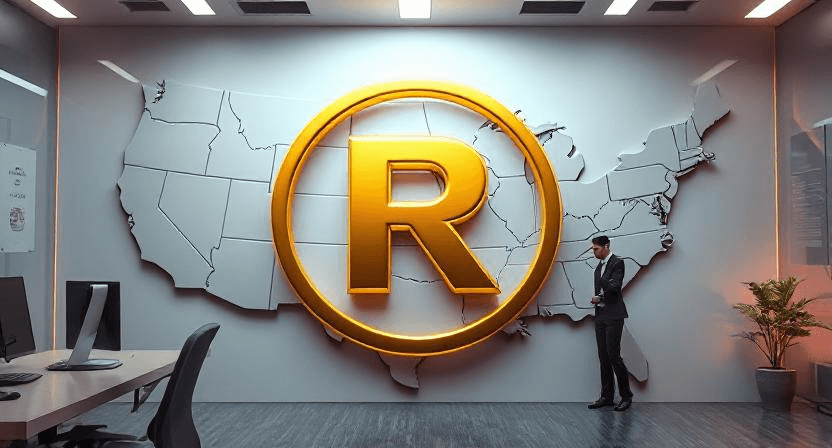A Landmark Case on the Importance of U.S. Trademarks: Christian Louboutin’s “Red Sole Shoes” Trademark Battle
 Trademarks are not only symbols of brands but also legal safeguards for a company’s core competitive edge. As one of the most advanced countries in global intellectual property protection, the United States’ trademark laws are particularly notable for their focus on non-traditional trademarks. Christian Louboutin’s successful defense of its iconic "red sole shoes" trademark reveals the crucial role trademarks play in brand value protection and market competition.
Trademarks are not only symbols of brands but also legal safeguards for a company’s core competitive edge. As one of the most advanced countries in global intellectual property protection, the United States’ trademark laws are particularly notable for their focus on non-traditional trademarks. Christian Louboutin’s successful defense of its iconic "red sole shoes" trademark reveals the crucial role trademarks play in brand value protection and market competition.
Background: The Red Revolution from Paris to New York
In 1992, French designer Christian Louboutin accidentally created the first red-soled high heels by painting his assistant's nails with red nail polish and applying it to the shoe sole. This visually striking design quickly became the brand's signature. In 2008, Louboutin successfully registered the "red sole" trademark with the U.S. Patent and Trademark Office (USPTO), with registration number 3,361,597, describing the sole as a specific shade of red (Pantone 18-1663TP).
By 2011, the red sole shoes had generated over $240 million in annual revenue for the brand, with individual pairs priced above $1,000. This commercial success attracted imitators, with the most challenging being luxury brand Yves Saint Laurent (YSL), which released high-heeled shoes with all-red coloring, including the sole, upper, and heel.
The Legal Battle: Can a Color Become an Exclusive Trademark?
In April 2011, Louboutin sued YSL for trademark infringement in a New York federal court, seeking an injunction and damages. YSL counter-sued, arguing that a color cannot be exclusively trademarked and questioning the validity of the USPTO registration. The central issues in the case were:
-
The Registrability of a Single Color Trademark: U.S. law under the Lanham Act permits color as a trademark, but the color must have acquired "secondary meaning" (i.e., consumers directly associate the color with a particular brand).
-
Functionality Issue: Whether the color red served an aesthetic function, making it ineligible for exclusive use.
-
Scope of Trademark: Louboutin's trademark was limited to the use of red for the sole in contrast to the rest of the shoe.
In August 2012, the Second Circuit Court of Appeals delivered a landmark ruling:
-
It upheld the validity of the red sole trademark, but restricted its use to "cases where the sole contrasts with the upper of the shoe."
-
It ruled that YSL's all-red high heels did not infringe Louboutin's trademark.
-
The court established the "contrast use" principle for color trademarks.
Commercial Impact: The Red Empire's Defense
Although Louboutin did not secure a complete victory, the case helped establish a legal fortress around the brand:
-
Counterfeit Litigation: From 2012 to 2020, Louboutin initiated over 300 infringement lawsuits, winning more than 95% of the cases.
-
Brand Value: After the litigation, Louboutin's brand value increased by 37%, and in 2014, it collaborated with Disney to release the "Cinderella crystal shoes," which sold for $60,000.
-
Industry Standards: The case encouraged the U.S. fashion industry to adopt dual protection strategies combining design patents and trademarks.
According to Statista data, in 2022, the global market for counterfeit luxury goods reached $60 billion, and Louboutin’s trademark enforcement saved the brand approximately $120 million annually in losses. Its official website includes a "counterfeit" section for trademark certificate verification, creating a unique brand protection system.
Systemic Insights: The Flexible Boundaries of U.S. Trademark Law
This case reshaped the protection standards for non-traditional trademarks:
-
Proving Secondary Meaning: Louboutin submitted data showing that 76% of respondents associated the red sole with the brand.
-
Use Restrictions: Color trademarks must specify the context of use to avoid overreaching exclusivity.
-
Industry Balance: The case struck a dynamic balance between encouraging innovation and preventing market monopolies.
U.S. Patent and Trademark Office data shows that between 2010 and 2022, the number of color trademark registrations increased by 218%, with the fashion industry accounting for 41% of the total. This directly reflects the far-reaching impact of this case on industry practices.
Trademark Strategy Insights for the Global Era
The "red sole shoes" case offers three key lessons for multinational enterprises:
-
Defensive Registration: Register trademarks early in key markets, as Louboutin did in 52 countries for its red sole trademark.
-
Dynamic Monitoring: Use digital tools like Brandwatch to monitor infringement in real time.
-
Legal Combination: Build a layered protection strategy combining trademarks (brand identifiers), patents (design innovations), and copyrights (advertising materials).
Conclusion
Christian Louboutin’s defense of its red sole shoes marks the evolution of trademarks from mere legal tools to powerful commercial weapons. Under the U.S. trademark system, a splash of red not only created a fashion legend but also set a global benchmark for brand asset protection. This case serves as a stark reminder: in the digital economy where a brand’s identity is everything, trademark strategy is not just an expense—it is a strategic investment that can determine the success or failure of a business.
Share this page
